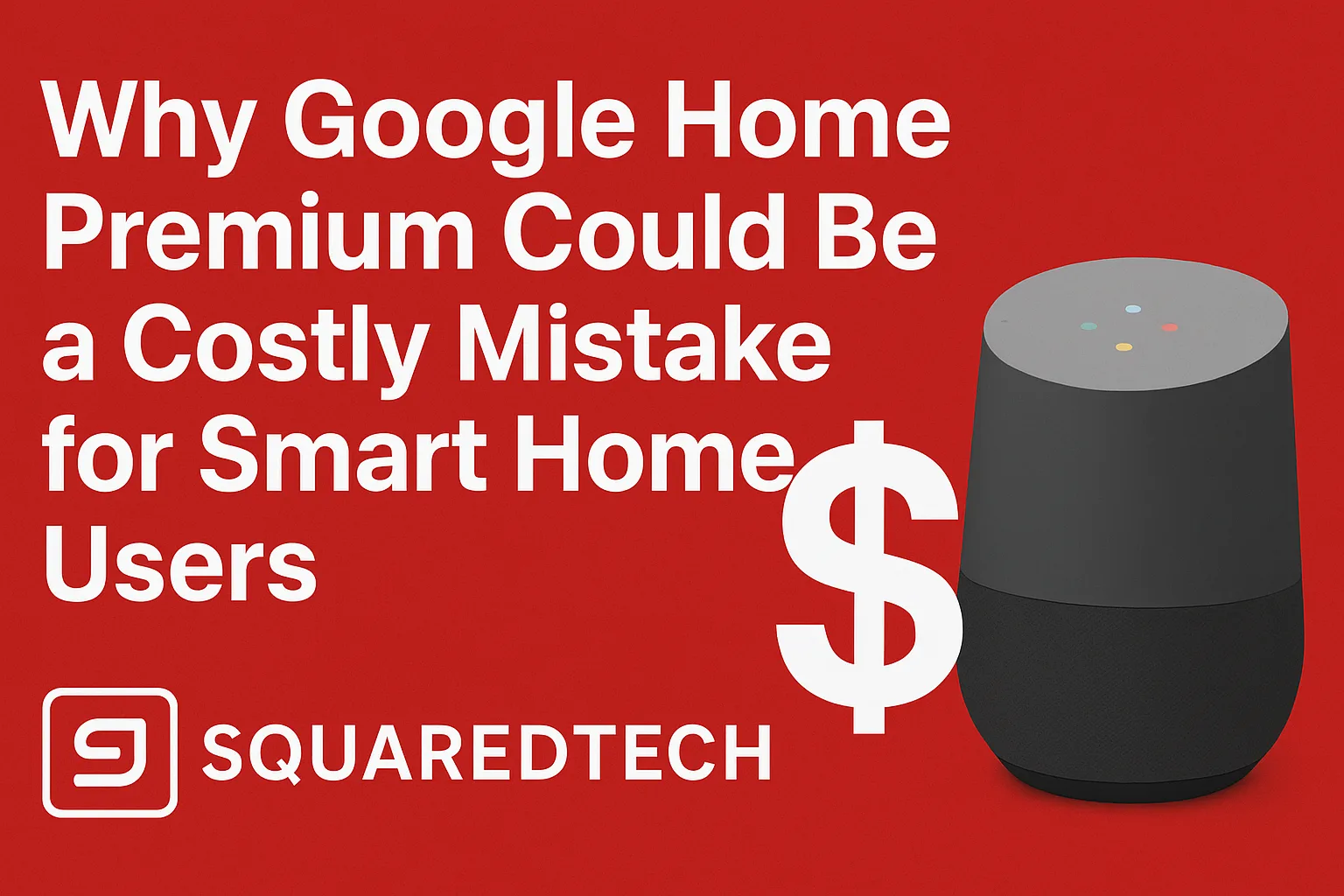Table of Contents
Google Home Premium: Why Squaredtech Sees Trouble Ahead
Google has launched a new wave of updates for its Home platform. The company replaced Assistant with Gemini, refreshed the Home app, and introduced new hardware. These upgrades have caught the attention of the tech industry. Squaredtech has been closely analyzing the impact of these changes. While the improvements show technical promise, the introduction of Google Home Premium raises serious concerns for many smart home users.
Subscriptions are not new. People are used to paying for services like streaming or cloud storage. But Google Home Premium takes a different approach. Instead of offering access to new content or software ownership, it locks basic functionality behind a recurring fee. Squaredtech believes this shift could harm consumer choice and transparency in the smart home space.

Read More About Our Article of 6 Crucial Features the New Google Home App Needs to Win Users Back Published on October 5, 2025 SquaredTech
Subscriptions Have Their Place, But Not Everywhere
Many users accept subscriptions for media. Platforms like YouTube Premium deliver hours of fresh content daily. In these cases, a recurring payment makes sense. Subscribers are paying for continuous production, updates, and distribution of new material.
However, Squaredtech observes a growing trend: subscriptions for software and hardware features that do not actually require ongoing costs. In the gaming world, for example, users often prefer to buy games outright instead of paying for temporary access through a service like Xbox Game Pass. Having access to a large library feels good on paper, but if a person only uses one or two titles, the value quickly disappears.
Google Home Premium risks following this same pattern. The subscription looks attractive because it offers many features, but how many users will actually use them? Squaredtech argues that people are paying for options, not for what they truly need or use. This creates an illusion of value that may not stand up to scrutiny.
Storage Should Not Be a Paid Barrier
One of the biggest selling points of Google’s previous service, Nest Aware, was cloud storage. Nest Aware offered up to 10 days of 24/7 recording for wired cameras and up to 60 days of event storage. Google Home Premium expands on that model. But Squaredtech questions why storage has become an enforced cost.
Other companies offer different approaches. Wyze, for example, sells affordable cameras that support local microSD storage. Users can directly access all recorded footage without paying for a subscription. The camera connects to the internet. The phone connects to the internet. There is no technical reason a third-party cloud must sit between them.
Squaredtech also highlights Arlo’s approach. Arlo allows customers to plug in a USB drive to a base station for local storage. This method avoids recurring costs while maintaining user privacy and control. In contrast, Google gives users a binary choice: pay for cloud storage or settle for limited event notifications.
This difference matters. Squaredtech believes consumers deserve a choice between local storage and cloud convenience. By forcing a subscription, Google reduces that choice and pushes people toward an ongoing payment model.
AI Does Not Have to Mean More Subscriptions
Google promotes Home Premium as an AI-driven service. Features like Gemini Live promise advanced recognition and smarter automation. Yet Squaredtech questions whether these functions require a cloud-based subscription.
At IFA this year, eufy presented its AI Core. This upgrade brings AI-powered video analysis directly to users’ homes. By processing footage locally, eufy eliminates the need for external servers. This means no recurring fees, no data leaving the home, and faster performance.
Squaredtech sees this as a model for the future. Yes, a local AI solution requires a higher upfront cost. But over time, it can be cheaper and more private than a subscription. Google could adopt a similar approach by offering a one-time payment for local AI capabilities instead of pushing an indefinite Home Premium plan.
This would allow customers to choose between convenience and ownership. Right now, Google Home Premium does not offer that choice.
A Broader Problem in Smart Home Products
Google is not the only company experimenting with subscriptions. Squaredtech has tested other smart home devices that lock essential functions behind paywalls. In one recent case, a product’s app worked perfectly well locally over Bluetooth and had built-in Wi-Fi support. Yet the manufacturer decided that remote access should require a subscription.
From a technical perspective, nothing prevented free remote access. All the infrastructure was already in place. The company simply chose to monetize a feature that used to be standard. Squaredtech sees this as a clear example of the subscription mentality spreading into hardware products.
This trend is especially visible in the United States, where consumers have become accustomed to subscriptions for everything from streaming to software. In contrast, some European markets have resisted this model. Squaredtech believes American consumers should take a closer look at whether these recurring fees are justified.
Why Google Home Premium Feels Like a Step Backward
Squaredtech acknowledges that Google Home Premium offers convenience and new features. Gemini Live and other AI-driven functions may genuinely improve the user experience. But Squaredtech’s analysis shows that these benefits come at a significant ongoing cost. At $100 a year or more, the subscription quickly adds up.
Google already provides many Gemini features for free on Android devices. This raises an important question: why charge for similar features on Google Home? Without a clear answer, Squaredtech argues that Google Home Premium feels less like innovation and more like a revenue experiment.
The result is a subscription that risks alienating customers who value ownership and transparency. Smart home users should be able to choose between paying upfront or subscribing, not be forced into one path.
Squaredtech’s Conclusion: Demand Choice and Fair Value
Google Home Premium reflects a larger shift in how technology companies think about revenue. Instead of selling a product once, they now seek ongoing payments for access to features that do not always require ongoing costs. Squaredtech believes this approach needs to be challenged.
Manufacturers do deserve compensation for maintaining services. Long-term support costs money. But the solution should not always be a subscription. Companies could build these costs into the original purchase price. Many consumers would rather pay more upfront and avoid recurring charges.
Google Home Premium looks like a powerful package. But Squaredtech cannot endorse a system where basic smart home functions become subscription-only. Until Google offers a real choice between local ownership and cloud convenience, Home Premium will remain a questionable proposition.
Stay Updated: Gadgets


